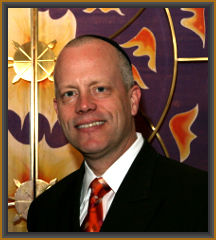
 |
Ritual and Meaning July 31, 2020
Dear Holy Friends, I hope this letter finds you doing well, in good health and in good cheer. We hope that you will join us this Shabbat for our Zoom services in honor of Shabbat Nachamu (the Sabbath of Consolation after Tisha B’Av). As I write this correspondence, I am thinking of the concept of temporary disconnect. The reason I say this is because, as I write this, it is Tisha B’Av. One of the customs during this unfortunate day of destruction is that we do not wear Tallit and Tefillin in the morning. Rather, the Tallit is draped over our shoulders and our Tefillin are wrapped only late in the afternoon. This custom evolved as a sign of mourning, and towards the end of the day, as the spirit of the commemoration changes from despair to hope, we re-embrace these two Mitzvoth and look forward to our future redemption. I literally cannot wait to wrap my Tefillin. For lack of a better term, I felt almost naked when joining in morning services today without my regular prayer attire. The power of ritual in our tradition is profound and compelling. Ritual allows us to order our lives, our thinking, and our perspective, whether it be for regular davening, the holidays, or Shabbat. Ritual offers us meaning on a multiple levels. Hoffman (1993) posits that “official meanings” of ritual are those meanings assigned by authorized explanations shared by clergy and passed down through generations. “Public meanings” are agreed upon meanings shared by a number of participants, even though they may not be the central meaning assigned by doctrine. Third, “private meanings” are idiosyncratic meanings based on personal experiences. Think of Pesach. The official meaning is the recounting of the Exodus. The public meaning may center around family gathering. A private meaning may be the recalling of one’s own personal journey, or for example, in the case of Russian Jews who came to America, an escape or deliverance. When I circle back to Tefillin, I am reminded of the official meaning (it is a commandment in the Torah to bind words of Torah on our arms and between our eyes), the public meaning (it is our collective synagogue attire at morning services) and the private meaning (this Mitzvah was part of my post-Bar Mitzvah routine with my father and brother). So, while we have many rituals, it is always for us to interpret, feel and appreciate them in the manner which is most inspiring to us. Today, now, I enter a local shul for a socially-distanced minyan, ready to wrap and ready to have the experience lift me from my everyday existence to a spiritual realm and sense of connection with my community, my people, and my God. Whether it be for participation in a Zoom minyan, a specific act such as Tefillin, or an ongoing act such as Kashruth, I pray that this Sabbath and its rituals bring us all great meaning, significance and simcha (joy)! B’Shalom,
Rabbi Eric L. Wasser, EdD
|